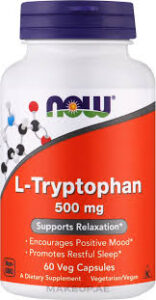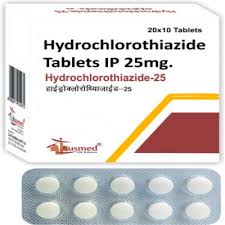A Symptom Checker

A Symptom Checker is a digital resource designed to assist individuals in identifying potential health issues based on the symptoms they report. These tools are generally powered by algorithms and extensive medical databases, with many incorporating insights from healthcare professionals to enhance their accuracy and dependability. While they are not a substitute for professional medical advice, they can serve as a valuable guide for users in understanding possible causes of their symptoms and determining when to seek medical assistance.

When a symptom checker is endorsed by medical practitioners, it indicates that it has been developed using scientifically validated medical data and algorithms that comply with established medical guidelines. These tools often integrate extensive medical databases that encompass peer-reviewed studies, clinical protocols, and expert contributions to ensure their trustworthiness.
Characteristics of Reliable Symptom Checkers
Evidence-Based Algorithms: Reliable symptom checkers utilize algorithms grounded in evidence-based medicine to evaluate the probability of various health conditions.
Collaboration with Medical Professionals: Some symptom checkers are created or supported by healthcare experts or organizations, which enhances their accuracy and reliability.
User-Friendly Design: These tools are crafted to be accessible to the general public, requiring users to input their symptoms along with other pertinent information such as age, gender, and medical history.
Tailored Recommendations: Based on the information provided, the symptom checker may propose potential conditions and offer guidance on subsequent steps, including when to consult a physician or seek emergency care.
Privacy Assurance: Reliable symptom checkers emphasize user privacy and confidentiality, ensuring that personal health information is managed securely.
Notable Symptom Checkers Endorsed by Medical Professionals:
WebMD Symptom Checker: As one of the most recognized symptom checkers, WebMD provides a comprehensive platform that offers users potential health conditions based on their reported symptoms. It is supported by healthcare professionals and is widely regarded as trustworthy.
The phrase “Symptom Checker Trusted by Doctors” typically denotes online tools or mobile applications designed to assist users in identifying potential medical issues based on the symptoms they describe. These resources are often developed with contributions from healthcare professionals and utilize evidence-based algorithms alongside clinical guidelines to deliver precise outcomes. Although they are not intended to substitute for professional medical counsel, they can aid users in assessing the seriousness of their symptoms and assist them in making informed choices regarding the necessity for further medical attention.
Key Characteristics of Symptom Checkers Endorsed by Medical Professionals
Scientific and Evidence-Based:
Reliable symptom checkers are grounded in current, peer-reviewed medical research and clinical guidelines, ensuring accurate and dependable evaluations of symptoms.
The algorithms are crafted to analyze user input against the most prevalent conditions associated with each symptom, prioritizing the most probable causes.
Medical Expertise and Collaboration:
These tools are frequently created or supported by medical professionals, including physicians, healthcare institutions, and academic researchers, ensuring that the guidance provided aligns with established medical standards.
Many reputable platforms consistently refresh their databases and algorithms to incorporate the latest research findings and medical recommendations.
Detailed User Input:
To yield the most precise results, symptom checkers typically require users to furnish a comprehensive array of information, including:
Symptom description: The characteristics of the symptoms (e.g., pain, fever, dizziness).
Symptom duration: The length of time the symptoms have been experienced.
Demographics: Information such as age, gender, and occasionally lifestyle factors like smoking or dietary habits.
Medical history: Existing health conditions and current medications.
This comprehensive input helps customize the results to the individual’s unique circumstances, thereby enhancing diagnostic accuracy.The phrase “Symptom Checker Trusted by Doctors” typically denotes online tools or mobile applications designed to assist users in identifying potential medical issues based on the symptoms they describe.
These resources are often developed with contributions from healthcare professionals and utilize evidence-based algorithms alongside clinical guidelines to deliver precise outcomes. Although they are not intended to substitute for professional medical counsel, they can aid users in assessing the seriousness of their symptoms and assist them in making informed choices regarding the necessity for further medical attention.
Key Characteristics of Symptom Checkers Endorsed by Medical Professionals
Scientific and Evidence-Based:
Reliable symptom checkers are grounded in cThe phrase “Symptom Checker Trusted by Doctors” typically denotes online tools or mobile applications designed to assist users in identifying potential medical issues based on the symptoms they describe. These resources are often developed with contributions from healthcare professionals and utilize evidence-based algorithms alongside clinical guidelines to deliver precise outcomes. Although they are not intended to substitute for professional medical counsel, they can aid users in assessing the seriousness of their symptoms and assist them in making informed choices regarding the necessity for further medical attention.
Key Characteristics of Symptom Checkers Endorsed by Medical Professionals
Scientific and Evidence-Based:
Reliable symptom checkers are grounded in current, peer-reviewed medical research and clinical guidelines, ensuring accurate and dependable evaluations of symptoms.
The algorithms are crafted to analyze user input against the most prevalent conditions associated with each symptom, prioritizing the most probable causes.
Medical Expertise and Collaboration:
These tools are frequently created or supported by medical professionals, including physicians, healthcare institutions, and academic researchers, ensuring that the guidance provided aligns with established medical standards.
Many reputable platforms consistently refresh their databases and algorithms to incorporate the latest research findings and medical recommendations.
Detailed User Input:
To yield the most precise results, symptom checkers typically require users to furnish a comprehensive array of information, including:
Symptom description: The characteristics of the symptoms (e.g., pain, fever, dizziness).
Symptom duration: The length of time the symptoms have been experienced.
Demographics: Information such as age, gender, and occasionally lifestyle factors like smoking or dietary habits.
Medical history: Existing health conditions and current medications.
This comprehensive input helps customize the results to the individual’s unique circumstances, thereby enhancing diagnostic accuracy.urrent, peer-reviewed medical research and clinical guidelines, ensuring accurate and dependable evaluations of symptoms.
The algorithms are crafted to analyze user input against the most prevalent conditions associated with each symptom, prioritizing the most probable causes.
Medical Expertise and Collaboration:
These tools are frequently created or supported by medical professionals, including physicians, healthcare institutions. Academic researchers, ensuring that the guidance provided aligns with established medical standards.
Many reputable platforms consistently refresh their databases and algorithms to incorporate the latest research findings and medical recommendations.
Detailed User Input:
To yield the most precise results, symptom checkers typically require users to furnish a comprehensive array of information, including:
Symptom description: The characteristics of the symptoms (e.g., pain, fever, dizziness).
Symptom duration: The length of time the symptoms have been experienced.
Demographics: Information such as age, gender, and occasionally lifestyle factors like smoking or dietary habits.
Medical history: Existing health conditions and current medications.
This comprehensive input helps customize the results to the individual’s unique circumstances, thereby enhancing diagnostic accuracy.
Babylon Health:
Overview: Babylon Health offers an AI-driven symptom checker alongside a telehealth service, enabling users to consult with licensed medical professionals.
Features: The Babylon application evaluates symptoms and delivers insights regarding possible underlying causes. If required, users can engage with a licensed doctor through video or chat for a more tailored consultation.
Doctor Trust: Babylon has gained the trust of numerous healthcare providers. Established a partnership with the NHS in the UK to facilitate virtual consultations, thereby enhancing the credibility of its platform.
Limitations: The symptom checker represents only one aspect of the application. Users should recognize that AI tools cannot fully replace a physical examination conducted by a healthcare professional.
Advantages of Utilizing Trusted Symptom Checkers
Convenience: Obtain medical insights and guidance without the immediate need for a doctor’s visit.
Time-Saving: Rapidly evaluate symptoms to determine if further medical consultation is warranted.
Reduced Anxiety: For individuals uncertain about the seriousness of their symptoms. Symptom checkers offer reassurance and help clarify the need for urgent care.
Accessibility: Symptom checkers are available around the clock, making them beneficial for after-hours or remote consultations.
Limitations and Risks
Not 100% Accurate: No symptom checker can assure a definitive diagnosis. The tool may overlook rare conditions or misinterpret symptoms.
Misleading Information: Based on user input, individuals may receive advice that does not pertain to their specific condition. Symptoms of various illnesses can overlap, and an algorithm may not always consider all variables.
Absence of Physical Examination: A symptom checker cannot perform a physical examination or laboratory tests. Which are often essential for accurate diagnosis.
Over-reliance: Some users may place excessive trust in symptom checkers. Delaying the pursuit of appropriate medical care, which could lead to adverse outcomes.
Conclusion
A Symptom Checker Endorsed by Medical Professionals serves as an invaluable resource for individuals seeking to comprehend their symptoms. Make educated choices regarding their health. These tools utilize sophisticated algorithms, extensive medical databases, and expert insights to deliver insightful evaluations. Direct users toward suitable subsequent actions. Nevertheless, despite their significant utility for initial self-evaluation. They should not be considered a substitute for professional medical advice, particularly in situations involving serious or potentially life-threatening symptoms.












